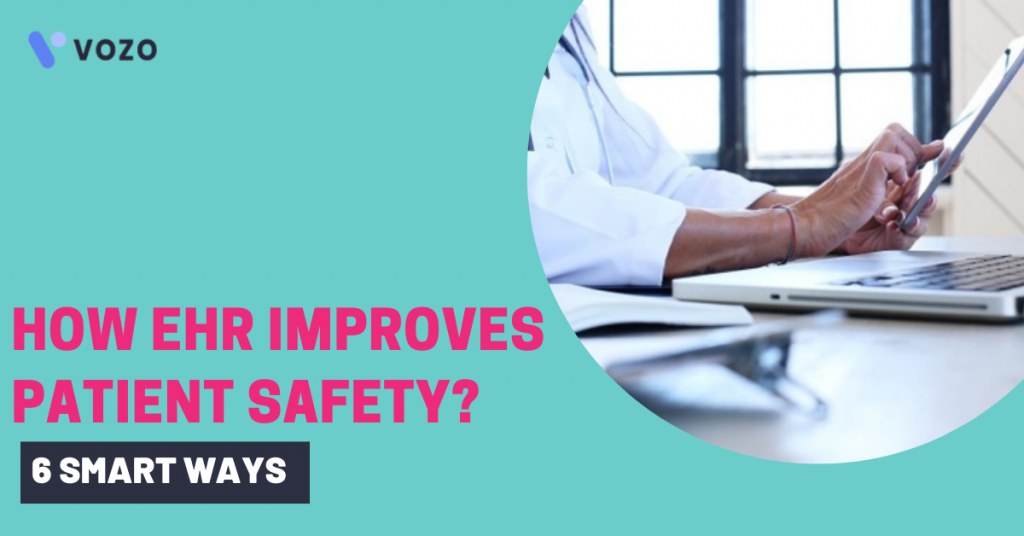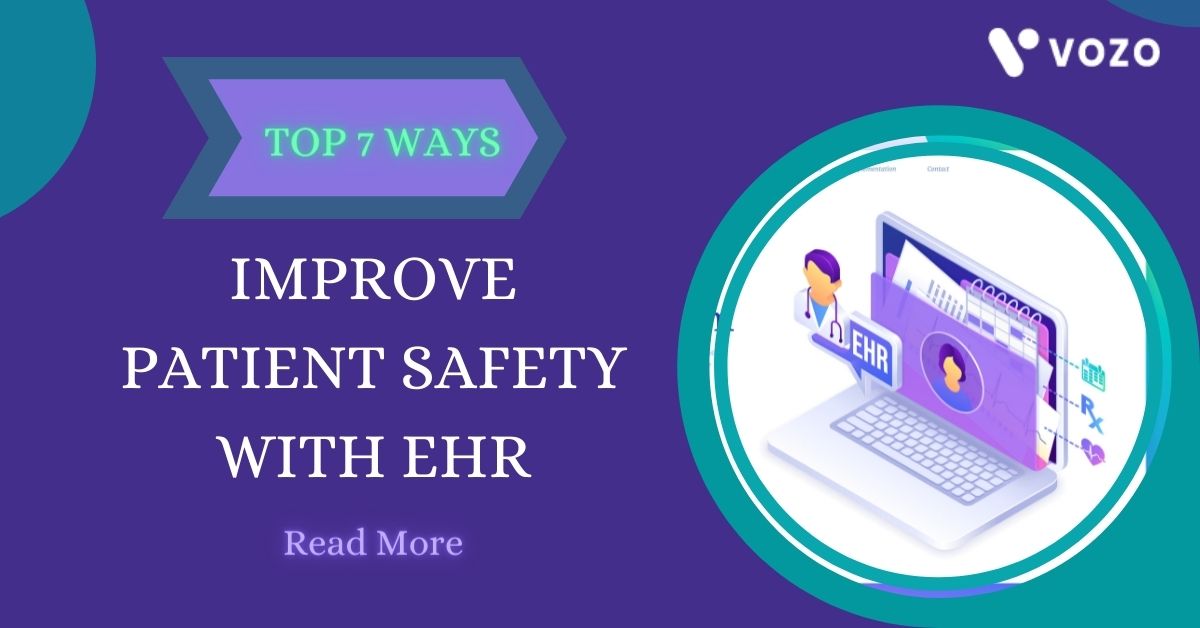Top 7 Ways To Improve Patient Safety With EHR
Patient safety due to its importance always remains a topic to debate. It’s very important to safeguard the patients both mentally and physically when they reach or use the services of a healthcare organization/hospital.
The compromise made on this particular thing can lead a hospital/ an institution to a very bad situation. Electronic Health Records (EHR) play an important role in safeguarding patients from potential threats.
Healthcare organizations have been clasping to EHR for over a decade now. It is only getting stronger with the new upgrades.
EHRs which are certified for their quality has the potential to improve patient safety in many different ways if used correctly. Let us now see the top seven ways to improve patient safety with Electronic Health Records (EHR).
1. Patient compliance and engagement
Patient outcomes can be only improved if the physicians and the patients have good communication between them. Without proper communication and engagement from both sides, patient outcomes can be poor.
For example, the patient portal allows patients to keep in touch with their physicians. They can review test reports, diagnoses, doctors’ notes, etc. This enables them to know details earlier and ask their doctors if they have any questions regarding follow-ups of the treatment they undergo.
Even if they have any doubts regarding their treatment or if they find any mistakes, they can directly contact their physician and check with him.
2. Prevention of side effects
EHR systems allow the providers to take appropriate good decisions at necessary times. The system has better decision-making tools that are designed to prevent adverse reactions from happening due to any drugs, medicines, food, etc, which the providers can use.
EHR stores the patients’ history, past discharge summaries, and other medical information about the patient. This can be accessed at any time so that in case of emergencies these can be referred for further treatments.
These records and details can be shared with any other specialists or physicians. And is not limited by geographical constraints.
3. Upgraded automation
The transfer of data and real-time communication of EHRs automates many processes to ensure patient safety. The physicians can be notified to help patients to get the prescription they need, or to remind them about their essential medicines.
For example, EHRs can notify the providers about follow-ups of patients.
4. Wearables – always helps
By making use of patient-reported data, EHRs can benefit and improve patient safety, when available. Internet of Things (IoT) healthcare and wearables devices help patients to record their health vitals, which can be shared with their physicians and in turn, helps them to maintain patient safety all the time.
These patient-reported data will likely be more useable in the future. Patient-reported data can also reduce the time of the physicians to concentrate on other productive businesses.
5. Improves public health outcomes
According to studies, EHRs can have beneficial effects on the health of a group of patients. The providers who have electronic health information about the entire population of patients they serve can gain from EHR. They can look into the needs of patients who suffer from conditions, who are currently taking specific medications, etc.
Providers are helped by the EHRs in identifying the patients, to control specific risk factors to improve patient outcomes and safety.
RELATED: EHR Alerts: Top 3 Ways For Better Patient Outcomes
6. Clinical processes, made easy
Putting patients in a waiting room for a longer period may increase the stress level of the patients. The patients may have bad encounters with other physicians, they may have insurance-related doubts, or they might want to discuss lab and test reports. These cases may be dealt with by the practice staff virtually.
These situations must be evaluated effectively. The evaluation may show insights about the problems which might lead to a reduction in the time of waiting and stress of the patients.
The clinical procedures can be carried out efficiently with the help of EHRs.
7. Reduces errors and improves patient safety
The role of EHRs does not stop with the sharing of information. It also computes it. An EHR influences the information to use according to the patients.
An EHR in addition to keeping records of a patient’s allergic history automatically alerts the physician if any problems prevail in the newly prescribed medicines to avoid any potential conflicts. Another example is that, in emergency cases, EHR allows the emergency staff to look into the patient’s history to know past diagnoses and treatments. Thus ensuring patient safety in many ways.

Final Say
Looking for an EHR Solution for your healthcare practice? Look no further than Vozo EHR. Our cloud-based EHR solution benefits both providers and patients.
Vozo EHR helps providers streamline and automate administrative tasks and encourages them to focus more on better patient care. With a vast range of features and benefits of Vozo EHR:
- Our telehealth platform enables Patients to care remotely without the need for in-person visits and reduces the cost of practice and patients.
- With appointment scheduling, patients can easily schedule appointments with healthcare providers easily reduces the wait time.
- Connect with healthcare providers conveniently via video call, chat, online messaging, etc without the need to consult providers in person.
- A cost-effective subscription plan benefits healthcare providers of all sizes.
- Vozo EHR can be the backbone of all your healthcare practice needs and requirements.
Vozo EHR helps you to navigate all the potential challenges and provides exceptional service and technical support to make sure you have no burden.
Reach out to Vozo and Empower the Best EHR solution for your healthcare practice.
About the author

With more than 4 years of experience in the dynamic healthcare technology landscape, Sid specializes in crafting compelling content on topics including EHR/EMR, patient portals, healthcare automation, remote patient monitoring, and health information exchange. His expertise lies in translating cutting-edge innovations and intricate topics into engaging narratives that resonate with diverse audiences.













